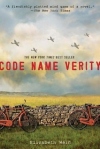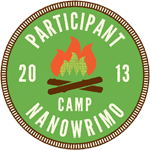I wrote this #ThrowBackThursday post for The Great Noveling Adventure blog and it was originally published on May 18, 2014.
READY TO PITCH IN THE BIG CITY? photo by Wojtek Witkowski via Unsplash
Back in March when I attended the SCBWI OK spring conference, some of you may remember that I won a couple of face-to-face critiques with speakers at the conference. During one of my sessions, I took the opportunity to ask Melissa Manlove, editor at Chronicle Books, what she thought of my 40-word pitch for my manuscript, which was included as part of the program. I’m fairly new at writing pitches and I knew that I could use some guidance. I’m very glad I asked. She was so generous with her time and her insights. What she said next really clarified the whole concept for me. I’ve been meaning to share that bit of wisdom for awhile, so here it is.
First of all she said my pitch was something to the equivalent of “Meh”.
Here is the pitch I submitted:
A childhood prank gone wrong leaves Will Harris crippled by fears and homebound. During an outing for his recovery, he witnesses a crime. No one believes him. He must find the courage to solve the mystery and prove his sanity.
I think by ‘meh’ she was being kind.
Next, she said, rethink the whole idea of trying to get the point of your story across in the length of an elevator ride. For a middle grade story, she said to try this:
Pitch your story like you’re telling it to a bored eleven-year old on an elevator.
And then lightning struck my brain.
I got it. She expanded this thought to say you should tell your pitch to this eleven year-old with the idea of convincing him this is a book he’ll be so excited to read, he’ll want to grab it right out of your hand. Get to the good stuff; the action. Kids don’t care about the backstory or character motivation when you’re trying to convince them to read a book, they want the main events.
Hey, I know this story that you are going to love. It’s all about this kid who gets locked up in a museum at night and then he finds these thieves stealing some of the paintings. He sets off the alarms, but when the police arrive, there’s no sign of the crime and no one believes him. He decides to solve the crime himself and that’s just the beginning of even more trouble.
That pitch is a little less “Meh” if I do say so myself. Sure, it’s a little longer than it’s supposed to be, but now let’s put it into a more refined form and see if it still works when we distill it back down to a 40-word count. (Just FYI, pitch lengths can vary. I kept mine to this length because that was the guideline for this particular conference submission. It’s not a bad idea to have a few different pitches on hand of varying lengths – some even Twitter length as many pitch contests arise and you never know, that agent or editor you’re dying to pitch to may one day participate in one.)
Will Harris gets locked up in a museum the same night thieves break in. Will triggers the alarm and police arrive. They find no sign of crime. The trouble gets started once Will decides to solve the crime himself.
Much better than the first one. And who knows, we might get that bored eleven year-old to snatch that book out of our hands, yet.
See if keeping your audience in mind helps when you write your next pitch.
This is a timely topic as I just served on a pitch panel for this month’s meeting for our local Tulsa SCBWI group as our members prepare for our spring conference. I spoke about this same experience with Melissa Manlove before we got into the pitches. I still use this idea – that and knowing the stakes. If you can convey something about your character and what’s at stake for them, you’ve pretty much got your pitch nailed.
What do you think? Are pitches easy for you? Do you have a successful method that helps you write them?



 Sara Sargent – Executive Editor at
Sara Sargent – Executive Editor at  Carter Hasegawa – Associate Editor at
Carter Hasegawa – Associate Editor at  Karl Jones – Associate Editor with
Karl Jones – Associate Editor with  Jodell Sadler – Literary Agent with Sadler Children’s Literary
Jodell Sadler – Literary Agent with Sadler Children’s Literary Victoria Selvaggio – Associate Agent with
Victoria Selvaggio – Associate Agent with  Jason Henry – Senior Designer with
Jason Henry – Senior Designer with 




















